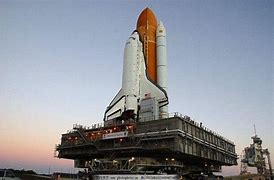**Fire, Gas, and Giant Metal Tubes: The Simple Science of Rocket Thrust**
(How Do Rockets Generate Thrust)
Rockets fly. They roar into the sky, leaving trails of smoke and fire. But how do these giant machines push themselves upward when there’s nothing to push against? The answer isn’t magic. It’s physics, fuel, and a lot of hot gas.
Let’s start with something simple. Imagine blowing up a balloon and letting it go. Air rushes out, and the balloon zips around the room. This happens because the air escaping pushes the balloon forward. Rockets work the same way. Instead of air, they shoot out hot gas super fast. The gas pushes back against the rocket, and the rocket moves forward. This is called thrust.
Now, rockets need fuel to make that gas. Most rockets burn a mix of fuel and oxygen. The fuel might be liquid, like kerosene or hydrogen. The oxygen is stored as a liquid too. When they mix and ignite, they explode—but in a controlled way. The explosion creates super-hot gas. This gas expands super fast and blasts out of the rocket’s nozzle. The nozzle is like a funnel. It squeezes the gas, making it shoot out even faster.
The faster the gas exits, the more thrust the rocket gets. Think of it like squeezing a garden hose. If you make the opening smaller, water sprays out harder. Rocket nozzles do this with gas. The shape of the nozzle—called a de Laval nozzle—is designed to speed up the gas to supersonic speeds. That’s faster than the speed of sound.
But there’s a problem. Space has no air. How do rockets burn fuel without oxygen? Simple: they carry their own. Rockets store liquid oxygen or use solid chemicals that already contain oxygen. Car engines need air from the atmosphere, but rockets bring everything they need. This is why rocket fuel is called *propellant*—it includes both the fuel and the oxidizer (the oxygen source).
Let’s break it down step by step. Fuel and oxidizer pump into a combustion chamber. They ignite, creating a fireball hotter than lava. The gas from this fireball has to go somewhere. It rushes out the nozzle at speeds over 10,000 miles per hour. As the gas escapes downward, the rocket is pushed upward. This is Newton’s third law in action: for every action, there’s an equal and opposite reaction.
Different rockets use different fuels. The Saturn V moon rocket burned kerosene and liquid oxygen. The Space Shuttle used hydrogen and oxygen, which made water vapor as exhaust. Solid rockets, like boosters strapped to shuttles, have fuel pre-mixed into a hard, rubbery material. When lit, they burn until the fuel runs out. Liquid-fuel engines can be turned on and off, making them better for steering.
Thrust isn’t just about power. It’s about balance. A rocket must produce enough thrust to overcome its weight. If the thrust is weaker than the rocket’s weight, it won’t lift off. This is why rockets are mostly fuel tanks. The more fuel they carry, the more thrust they can create—but the heavier they get. Engineers spend years figuring out this balance.
Rockets also work better in space. Earth’s atmosphere creates drag, which slows them down. Once in space, there’s no air resistance. The rocket keeps moving because nothing is pushing back. But to get there, it has to fight gravity and drag first. This is why takeoff requires the most thrust.
You might wonder why rockets don’t tip over. Small engines called thrusters fire to adjust direction. Gyroscopes and computers keep the rocket stable. Without these, even a tiny imbalance could send the rocket spinning.
(How Do Rockets Generate Thrust)
Rocket science isn’t easy. But the core idea is simple: push gas out hard enough, and the gas will push back harder. It’s fire, force, and engineering—all packed into a giant metal tube. Next time you see a rocket launch, remember: it’s not just flames. It’s physics, doing its job.
Inquiry us
if you want to want to know more, please feel free to contact us. (nanotrun@yahoo.com)




